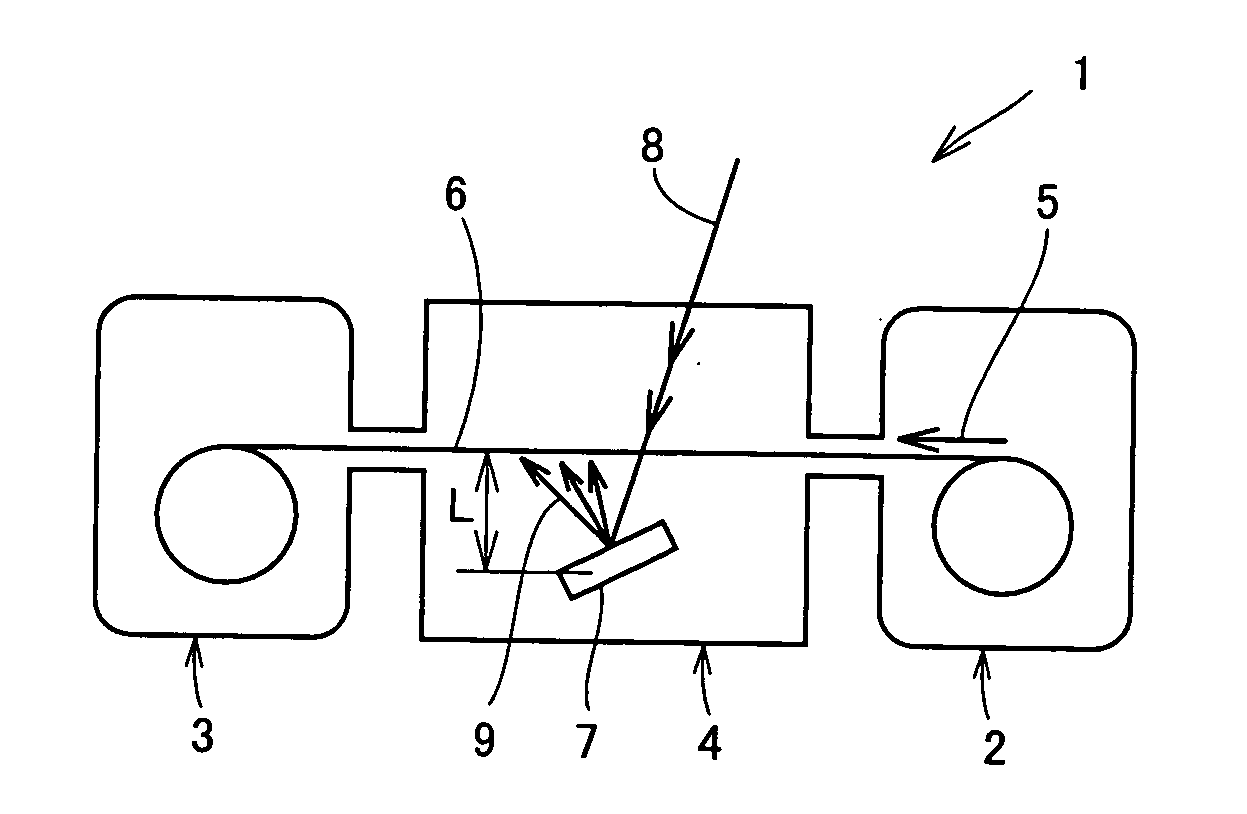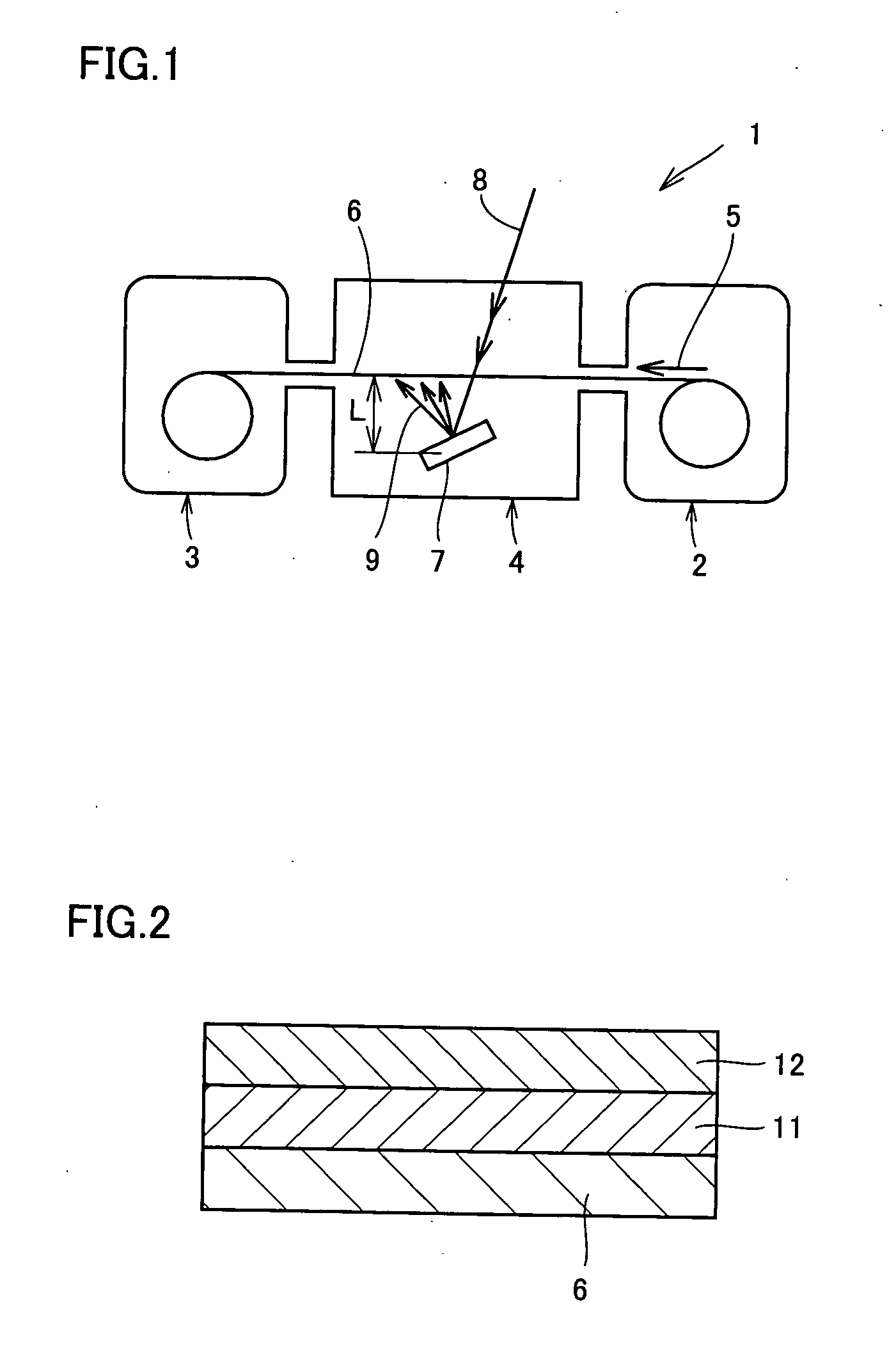Method of manufacturing oxide superconductive wire
a superconductive wire and oxide technology, applied in the direction of superconducting magnets/coils, superconductor devices, magnetic bodies, etc., can solve the problem of difficult to maintain crystal orientation in the same direction, and achieve the effect of superior critical current density
- Summary
- Abstract
- Description
- Claims
- Application Information
AI Technical Summary
Benefits of technology
Problems solved by technology
Method used
Image
Examples
example 1
[0033] An orientation substrate of an Ni group alloy (0.1 mm thickness×10 mm width ×50 m length) having yttria-stabilized zirconia (YSZ) of a thickness of 1 μm deposited thereon as an intermediate layer was prepared. On this substrate, an oxide superconductive layer of HoBa2Cu3O7-x (HoBCO) was deposited. As a manufacturing condition, a laser deposition method was used with laser energy of 600 mJ. Oxygen was used as a film formation gas, a gas pressure was set to 26.7 kPa (200 Torr), and a distance between a deposition object (metal tape) and a target was kept 80 mm. An irradiation area on the target was set to 4 mm×6 mm with a condenser lens to form a rectangular plume.
[0034] In the condition as described above, a Hastelloy tape as above was transferred through the plume to form a film with adjusting a frequency of a laser so as to obtain a desired thickness of 0.25 μm over a whole film. A sample as a reference was prepared by a method in which a superconductive film was deposited ...
example 2
[0036] The orientation substrate of the Ni group alloy used in example 1 which had the intermediate layer deposited thereon was used, and an HoBCO film was deposited thereon as in example 1. As a manufacturing condition, the distance between the deposition object (metal tape) and the target was changed to 60 mm, and the irradiation area on the target was set to 0.6 mm×40 mm with a condenser lens to form a line plume. The other conditions were made similar to those in example 1.
[0037] In example 2, the oxide superconductive layer was formed at respective four transfer speeds of 1.7 m / h, 2.5 m / h, 5 mh, and 6.6 m / h to obtain samples. Critical current values (Ic) of the samples were measured. A critical current density (Jc) was measured using the Ic obtained. Results are shown in Table 2. Table 2 indicates that, in example 2, there is also a tendency of the Jc to increase as the transfer speed increases, as in example 1. In particular, the value of Jc increased at the transfer speed of...
PUM
| Property | Measurement | Unit |
|---|---|---|
| distance | aaaaa | aaaaa |
| transfer speed | aaaaa | aaaaa |
| thickness | aaaaa | aaaaa |
Abstract
Description
Claims
Application Information
 Login to View More
Login to View More - R&D
- Intellectual Property
- Life Sciences
- Materials
- Tech Scout
- Unparalleled Data Quality
- Higher Quality Content
- 60% Fewer Hallucinations
Browse by: Latest US Patents, China's latest patents, Technical Efficacy Thesaurus, Application Domain, Technology Topic, Popular Technical Reports.
© 2025 PatSnap. All rights reserved.Legal|Privacy policy|Modern Slavery Act Transparency Statement|Sitemap|About US| Contact US: help@patsnap.com


